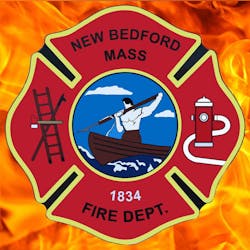FFs Dispute MA Officials over Blackout Policy's Effects
By Kiernan Dunlop
Source The Standard-Times, New Bedford, Mass.
NEW BEDFORD, MA—The local firefighters union has charged that the fire chief and Mayor Jon Mitchell misled the public when they insisted that fire equipment blackouts did not impact the response to an Oct. 22 fire.
The union released a statement Thursday stating that the city's blackout policy does, in fact, impact the effectiveness of the fire department's response and puts firefighters into hazardous situations.
One of the two vehicles at the closest fire station, Engine 8, was blacked out at the time of the North End fire which cost Louise Barboza her life.
Ladder Company 4, which is responsible for search and rescue, did respond from the closest station and firefighters were able to locate and evacuate the 85-year-old occupant of the building, but she later died at the hospital.
The city's blackout policy leaves one fire department vehicle unstaffed for a shift on a rotating schedule in order to save money.
Firefighters have bemoaned the policy for years, but discussion about it has been renewed following the fatal fire on Coffin Avenue.
The union's statement, signed by Local 841 President Thomas Carreiro, said comments made by Mitchell regarding the response to last month's fire "mislead the public in order to make the tough choices look easy."
The statement specifically referenced the mayor's comments to NBC10 News which stated the response time to the Coffin Ave fire were within parameters and "The blackouts continue to be something that we have to do because of fiscal pressures on the city. But the reality is, it hasn't affected responsiveness."
The statement from the union assumes that that parameters Mitchell was referring to were the National Fire Protection Association Guidelines, which recommends 15 firefighters within 8 minutes and the first engine within 4 minutes, but the statement says that guideline refers to a two-story single-family home with no basement and no exposures.
"[The Coffin Avenue] residence did not meet that standard and would have required additional resources," according to the statement, which also said NFPA recommends 20 -25 firefighters within 8 minutes for New Bedford housing stock.
The Standard-Times reached out to the mayor's office and Fire Chief Paul Coderre for comment, but the city's Public Information Officer Jonathan Carvalho said they would defer to the chief's previous statement on the fire.
In his previous statement Coderre said, "Based on a review of radio traffic among responding units, it was determined that units responded in under 6 minutes, consistent with the national standard for fire response time according to the National Fire Protection Association" and that the blackout policy had no effect on the time of arrival of the first fire apparatus since Ladder 4 arrived from the closest station.
The union's statement also included what it said was a "more accurate and complete" description of firefighters efforts at the Coffin Ave. fire than the one that was given to the media by Chief Coderre.
Coderre said Lt. Kevin Cormier and firefighter Christopher Mount of Ladder Company 4 conducted a search of the residence and were able to quickly locate and evacuate Barboza.
The statement from the union expanded on that to include that "flashover" had occurred by the time firefighters arrived at the scene, which means exposed surfaces reached their ignition temperature and the fire spread rapidly, and Cormier and Mount forced entry without the protection of a charged line.
A charged line is a hose that is filled with water and pressurized, typically carried by engines.
Cormier and Mount were able to find Barboza under heavy fire and smoke conditions, according to the statement, and "pass her off to members of Engine 7 who had arrived some time after Ladder 4. Lt. Cormier and Firefighter Mount then used Engine 7's hoseline to attack the fire, protecting Ms. Barboza and the members of Engine 7 as they continued the rescue down the stairs."
The statement calls searching without the protection of a charged line "one of the most hazardous that any firefighter can attempt" and said "it can increase the time it takes to find victims," though it did not in this case.
Carriero also included a recommendation from the National Institute of Occupational Health and Safety which suggests fire departments should ensure that a charged hoseline is either advanced with the search and rescue crew or is operated by another firefighter providing protection and states "A fire fighter is taking a substantial risk when entering a burning structure without a charged hoseline or protection from one."
According to the union's statement,"While is it perhaps technically accurate to state that 'black outs' haven't affected responsiveness, it is clear that black outs affect the effectiveness of that response as well as the danger that firefighters face during that response."
The statement closes by saying that the mayor's comments indicate he wants a fire department with fewer fire stations and firefighters. It then calls for all facts to be presented to the public honestly and in proper context as the public debate about what type of fire department the citizens of New Bedford want continues.
———
©2019 The Standard-Times, New Bedford, Mass.
Visit The Standard-Times, New Bedford, Mass. at www.southcoasttoday.com
Distributed by Tribune Content Agency, LLC.






